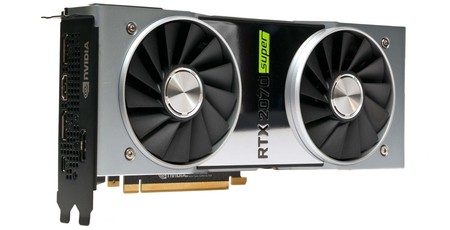
Manufacturer: Nvidia
UK price (as reviewed): MSRP £475 (inc. VAT)
US price (as reviewed): MSRP $499 (exc. tax)
Today kicks off what is likely to be one of the busiest months in PC hardware in a long, long time. Out of what can only be concern for the well-being of tech journalists, Nvidia has graciously saved us from enjoying the best weather the UK has had all year burning in the sun by bringing forward the launch of two of its three new RTX Super cards. This will act has something of a pre-emptive strike against AMD’s upcoming Navi hardware and prevent the reds from enjoying all the headlines this week.
Like the $399 RTX 2060 Super, the $499 RTX 2070 Super is soft-launching with reference card reviews today and hard-launching with availability of both reference and partner cards on July 9th i.e. the originally planned date. This will be followed by the $699 RTX 2080 Super on July 23rd (review date TBC), and these three cards will shake up the middle of the RTX range with new price/performance points as Nvidia phases out the original RTX 2070 and RTX 2080, leaving RTX 2060 and RTX 2080 Ti as the entry-level and flagship parts respectively.
Despite its name, the RTX 2070 Super is not an overclocked version of the RTX 2070, nor is it even built using the same GPU as that card. To get a sense of where and how it fits into the stack, see the specs below and be sure to check out our Turing architecture article if you’re not familiar with it currently.
| Nvidia GeForce RTX 2080 Ti | Nvidia GeForce RTX 2080 | Nvidia GeForce RTX 2070 Super | Nvidia GeForce RTX 2070 | Nvidia GeForce RTX 2060 Super | Nvidia GeForce RTX 2060 | |
|---|---|---|---|---|---|---|
| Architecture | Turing | Turing | Turing | Turing | Turing | Turing |
| Codename | TU102 | TU104 | TU104 | TU106 | TU106 | TU106 |
| Base Clock | 1,350MHz | 1,515MHz | 1,605MHz | 1,410MHz | 1,470MHz | 1,365MHz |
| Boost Clock | 1,545MHz | 1,710MHz | 1,770MHz | 1,620MHz | 1,650MHz | 1,680MHz |
| Layout | 6 GPCs, 68 SMs | 6 GPCs, 46 SMs | 5 or 6 GPCs, 40 SMs | 3 GPCs, 36 SMs | 3 GPCs, 34 SMs | 3 GPCs, 30 SMs |
| CUDA Cores | 4,352 | 2,944 | 2,560 | 2,304 | 2,176 | 1,920 |
| Tensor Cores | 544 | 368 | 320 | 288 | 272 | 240 |
| RT Cores | 68 | 46 | 40 | 36 | 34 | 30 |
| Texture Units | 272 | 184 | 160 | 144 | 136 | 120 |
| ROPs | 88 | 64 | 64 | 64 | 64 | 48 |
| L2 Cache | 5.5MB | 4MB | 4MB | 4MB | 4MB | 3MB |
| Peak TFLOPS (FP32) | 13.4 | 10 | 9.1 | 7.5 | 7.2 | 6.2 |
| Peak TIPS (INT32) | 13.4 | 10 | 9.1 | 7.5 | 7.2 | 6.2 |
| Peak FP16 Tensor TFLOPS (FP16 Accumulate) | 107.6 | 80.5 | 72 | 59.7 | 57.4 | 51.7 |
| Giga Rays/sec | 10 | 8 | 7 | 6 | 6 | 5 |
| Transistors | 18.6 billion | 13.6 billion | 13.6 billion | 10.8 billion | 10.8 billion | 10.8 billion |
| Die Size | 754mm2 | 545mm2 | 545mm2 | 445mm2 | 445mm2 | 445mm2 |
| Process | 12nm FFN | 12nm FFN | 12nm FFN | 12nm FFN | 12nm FFN | 12nm FFN |
| Memory | 11GB GDDR6 | 8GB GDDR6 | 8GB GDDR6 | 8GB GDDR6 | 8GB GDDR6 | 6GB GDDR6 |
| Memory Data Rate | 14Gbps | 14Gbps | 14Gbps | 14Gbps | 14Gbps | 14Gbps |
| Memory Interface | 352-bit | 256-bit | 256-bit | 256-bit | 256-bit | 192-bit |
| Memory Bandwidth | 616GB/s | 448GB/s | 448GB/s | 448GB/s | 448GB/s | 336GB/s |
| TDP | 250W | 215W | 215W | 175W | 175W | 160W |
Whereas RTX 2060 Super is almost-but-not-quite the RTX 2070, the RTX 2070 Super is more of an in-between card, slotting fairly neatly into the gap between RTX 2070 and RTX 2080 and in turn leaving a nice big gap for RTX 2080 Super to presumably fill.
Since the TU106 GPU is already fully enabled in RTX 2070, Nvidia has turned to TU104 for RTX 2070 Super. This sees the SM count rise by four, giving it an 11 percent increase in CUDA Cores, RT Cores, Tensor Cores, and texture units. With a power limit that’s the same as RTX 2080 but fewer processing units to keep on at any one time, RTX 2070 Super’s clock speeds are able to go higher (silicon quality has probably also gone up since launch). In fact, the default base and boost clocks are now the highest within the GeForce RTX family going by reference clocks, and the boost clock is 150MHz (just over nine percent) higher than that of RTX 2070.
The memory situation has not changed and remains at full capability with an 8GB GDDR6 frame buffer running at 14Gbps over a 256-bit interface and delivering up to 448GB/s of raw bandwidth. This is also the same as the RTX 2060 Super, but one of the few things we know about RTX 2080 Super is that memory bandwidth will go up to 15.5Gbps. ROP and L2 cache segments are tied to memory controllers with Turing, so again the counts here are the same as RTX 2080, RTX 2070, and RTX 2060 Super: 64 and 4MB respectively.
Nvidia reckons on RTX 2070 Super being faster than GTX 1080 Ti, which means in turn it’s likely to be nipping at the heels of RTX 2080. That’s a pretty big deal considering RTX 2080 starts at about £650 and this card is launching for £475. Come Sunday, AMD’s Navi cards will launch, including the $449 Radeon RX 5700 XT (UK price TBC), so it’s clear Nvidia is setting this up as a competitor to that card.
Nvidia’s focus on its reference-clocked Founders Edition cards for the first week of RTX Super’s life will help prevent crazy pricing on high-end third-party cards from confusing the narrative of where they’re positioned. We’ll be released from embargo on third-party cards a week from today.
The RTX 2070 Super Founders Edition is examined more closely below, but there are no real changes compared to the RTX 2080 FE design, so feel free to skip ahead.
The Card
Just as the RTX 2060 Super Founders Edition is a replica of the existing TU106 Founders Edition design found with RTX 2060 and RTX 2070, the RTX 2070 Super Founders Edition is based on the larger TU104 board/cooler design that Nvidia introduced with RTX 2080 and RTX 2080 Ti. That means it’s the full-size (267mm) long variant with true dual-slot dimensions that will fit in the vast majority of today’s cases.
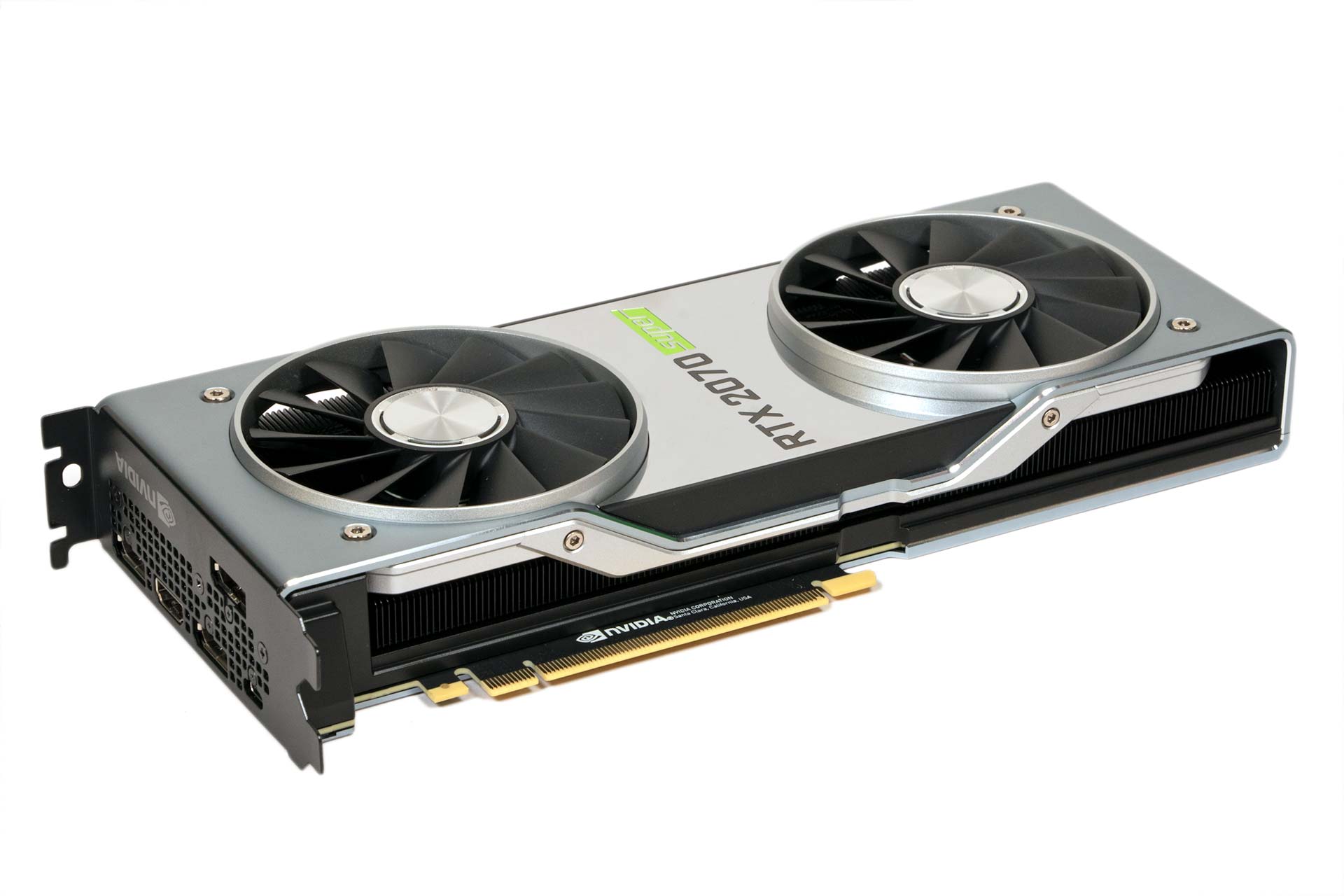
Build quality is as solid as ever, and the combination of two-tone aluminium and the sleekly integrated backplate including a dedicated cover for the single NVLink connector still tickles our fancy. We begrudge the green Super logo, though, because unlike the LEDs along the top edge you cannot use software to get rid of these, and that’s an important consideration in today’s RGB world. That single NVLink connector will allow you to run two cards in SLI.
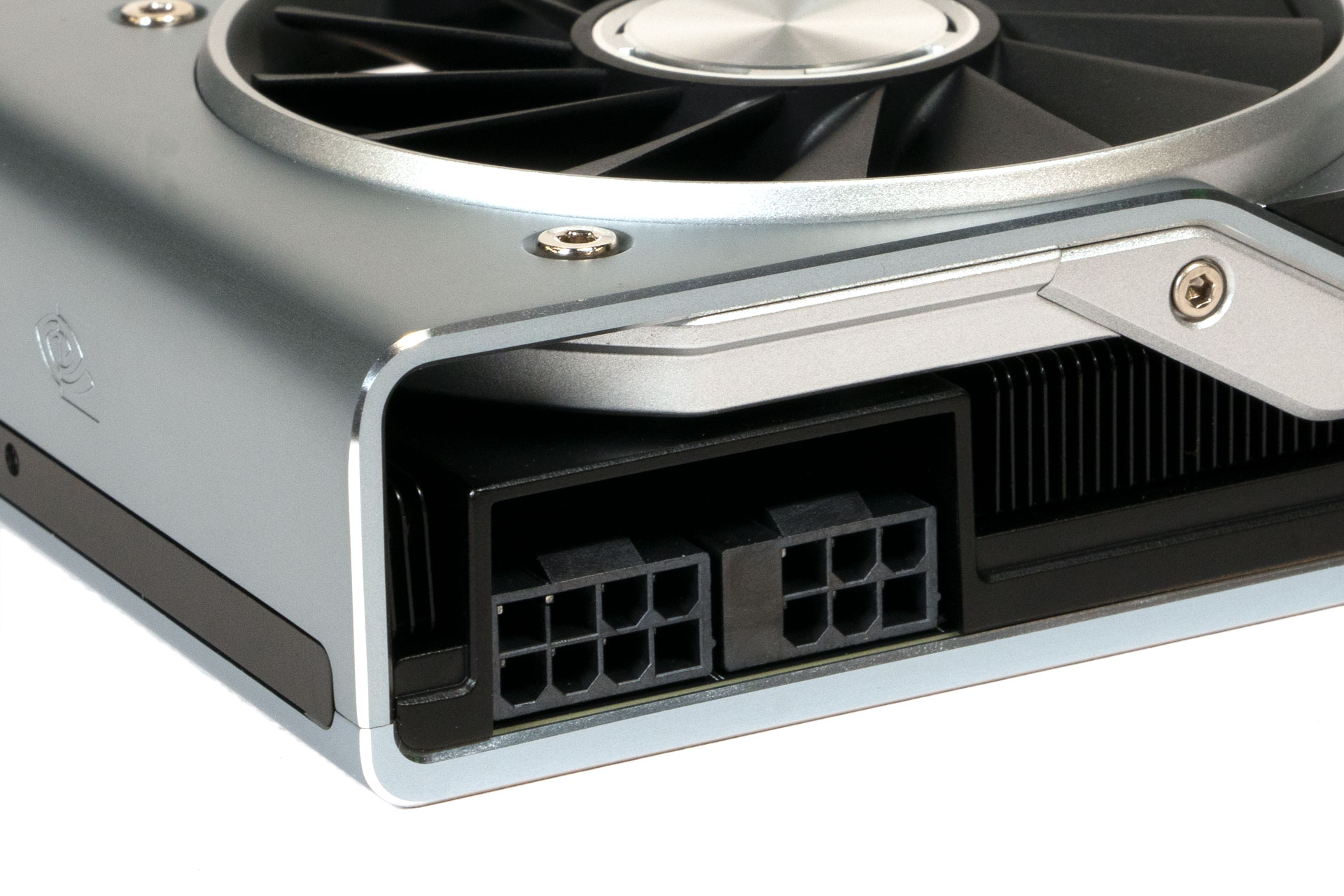
An eight-pin/six-pin PCIe plug combo located along the top delivers up to 225W to this 215W card, bringing total available power to 300W once the PCIe slot is factored in. Plenty of headroom, in other words.
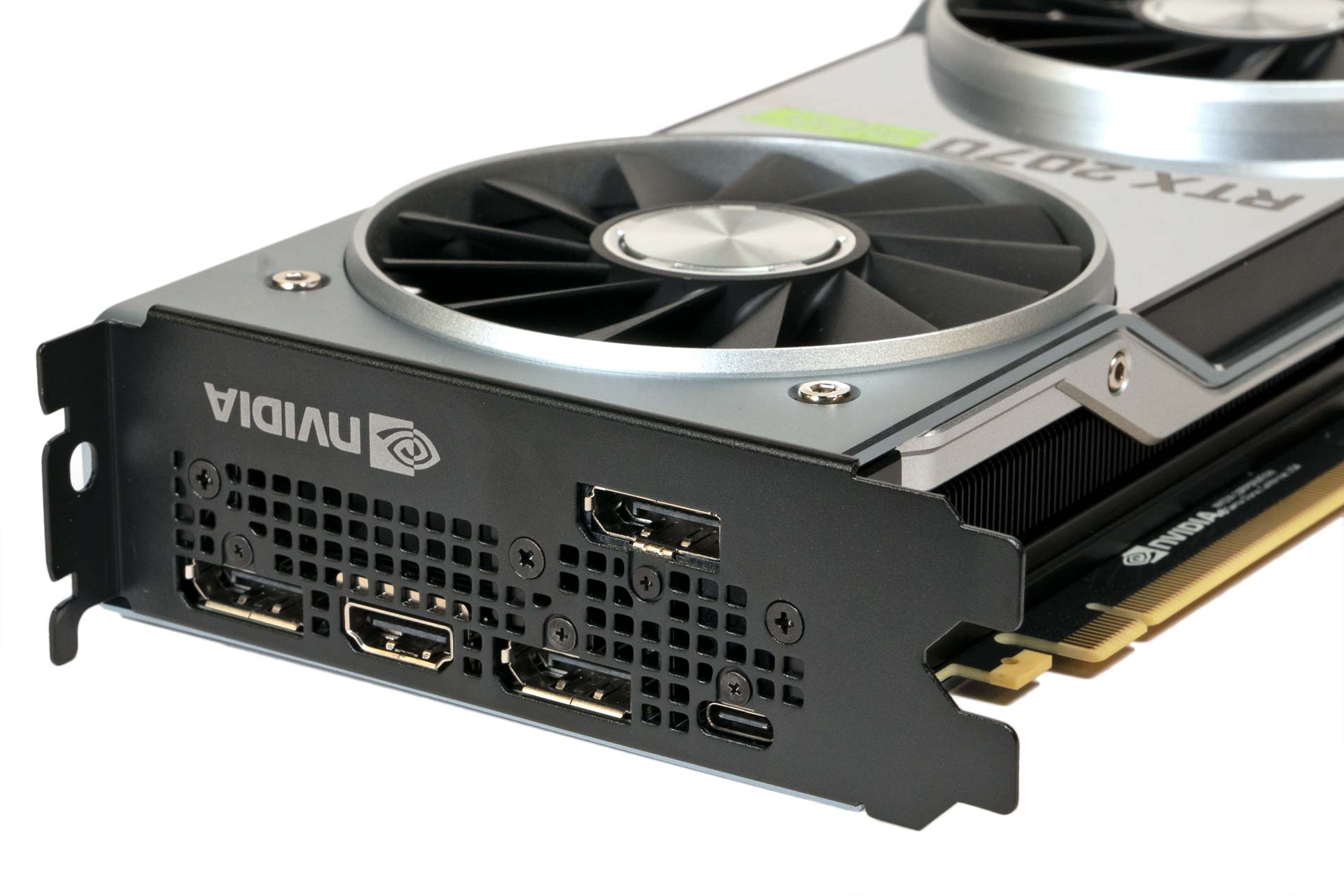
Triple DisplayPort 1.4 connectors are joined by a single HDMI 2.0b port and a USB-C VirtualLink plug. There are no non-digital connections, then, but at this level of GPU this makes sense. That USB-C port can add up to 27W to the card’s power consumption that is not incorporated in the power figures.
Two axial fans provide the airflow needed to cool the card, and heat from these is exhausted out of the top and bottom i.e. into your case, so plan around that. The fans are not semi-passive and thus will not switch off when the card is in low-power states.
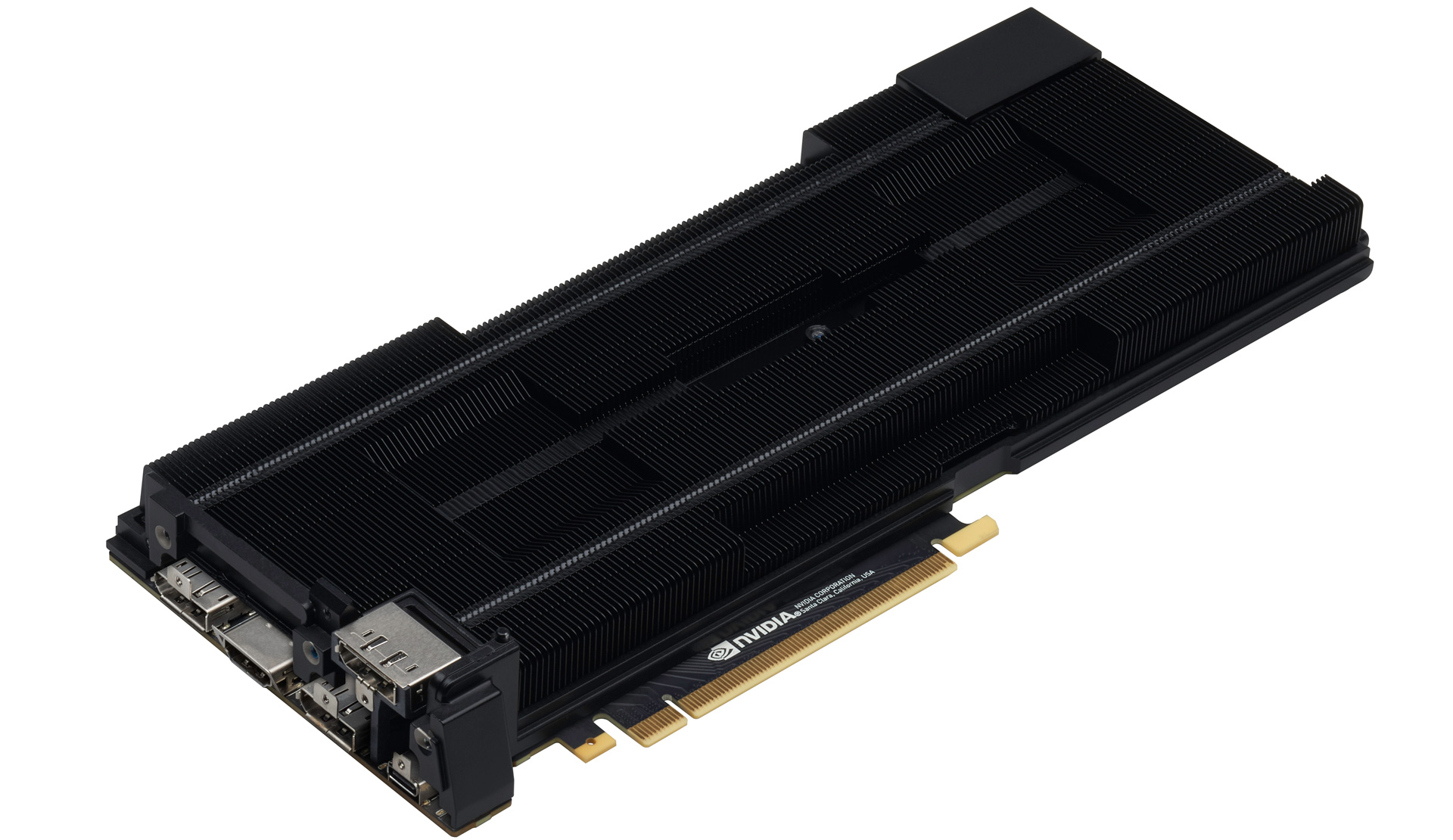
Unlike the smaller FE design that has a standard copper/aluminium heatsink, this design includes a full-length vapour chamber in order to maximise the cooling potential of the relatively low volume. A massive internal contact plate ensures that the memory modules and VRM components also directly benefit from the cooling on offer. The space-efficient design comes at the cost of disassembly, though, as this is not the easiest card to take apart to say the least.
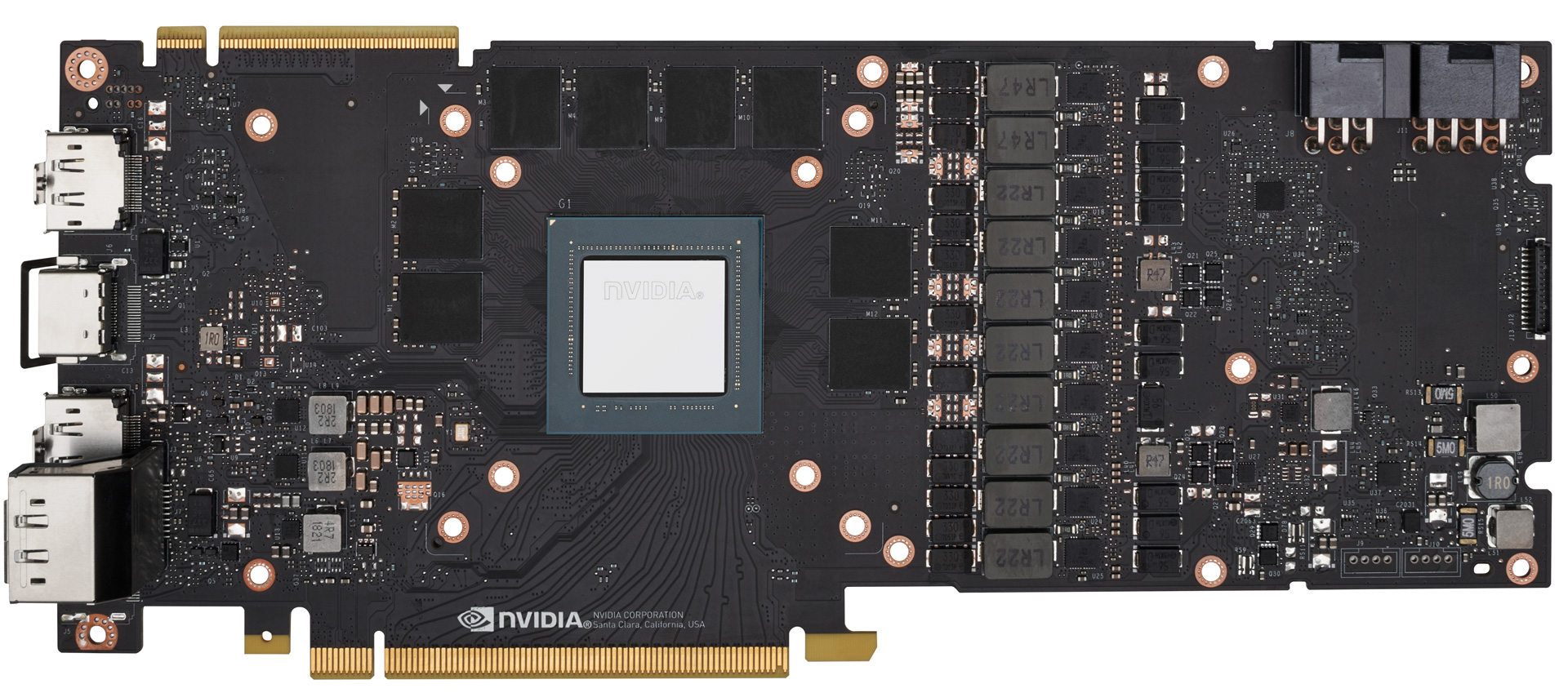
Nvidia has stopped binning its GPUs into premium A variants and less premium non-A chips, so we’re not expecting to find different product numbers on different cards even when third-party ones come through. Meanwhile, the PCB and power delivery is cloned from the RTX 2080 FE design (which is the card shown in the above two images), meaning we have an 8+2 phase power setup.
A three-year warranty gives the FE card another bonus over bog-standard reference cards, which often only have a two-year deal.
Specifications
- Graphics processor Nvidia GeForce RTX 2070 Super, 1,605MHz (1,770MHz boost)
- Pipeline 2,560 stream processors, 40 RT Cores, 320 Tensor Cores, 160 texture units, 64 ROPs
- Memory 8GB GDDR6, 14Gbps effective
- Bandwidth 448GB/sec, 256-bit interface
- Compatibility DirectX 12, Vulkan, OpenGL 4.5
- Outputs 3 x DisplayPort 1.4, 1 x HDMI 2.0b, 1 x USB-C VirtualLink
- Power connections 1 x eight-pin PCIe, 1 x six-pin PCIe, top-mounted
- Size 267mm long, 115mm tall, dual-slot
- Warranty Three years

MSI MPG Velox 100R Chassis Review
October 14 2021 | 15:04

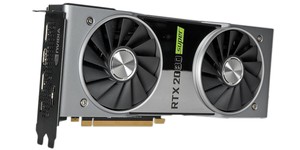
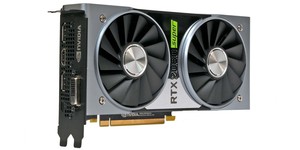
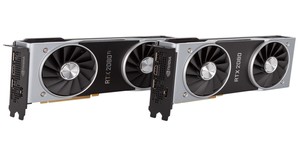




Want to comment? Please log in.